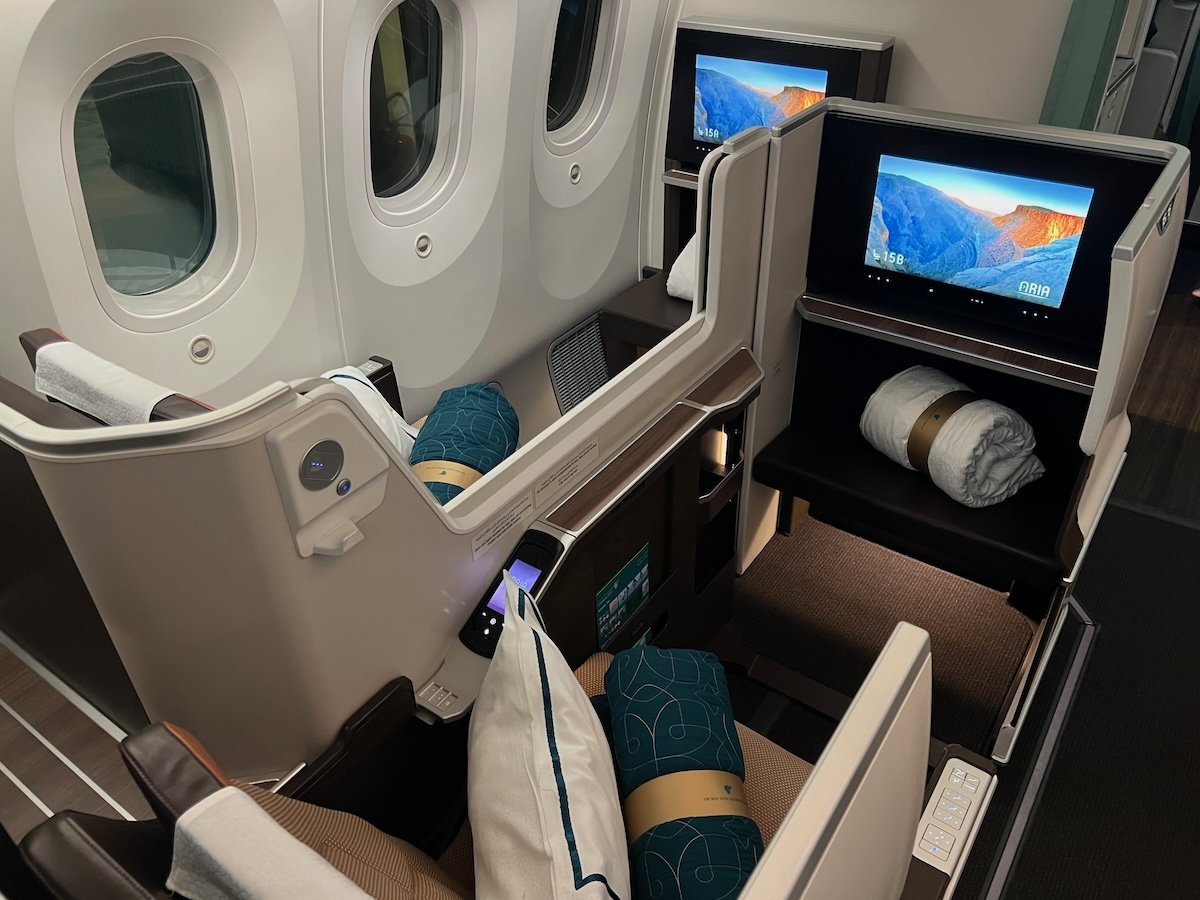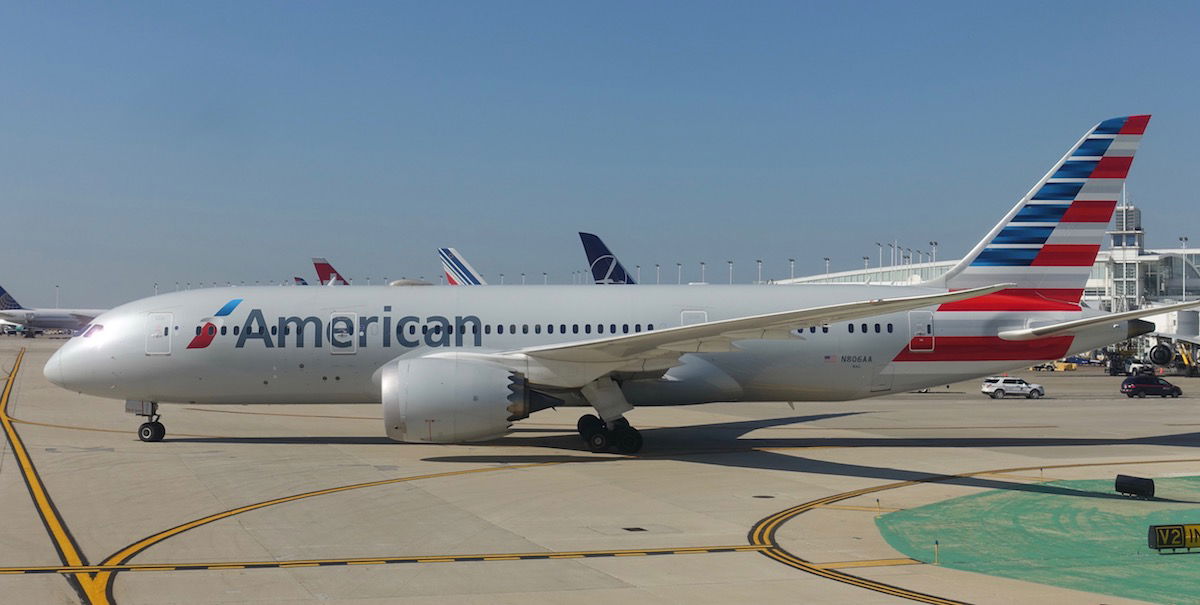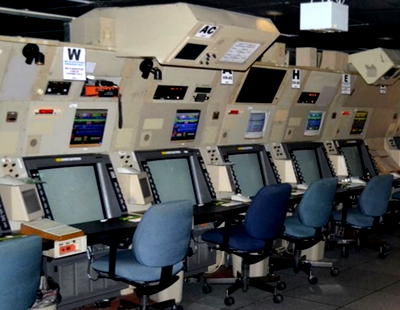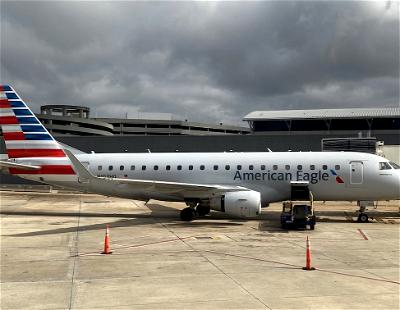If you’ve flown a Boeing 787 Dreamliner, you may have noticed that your cell phone suddenly loses its signal when you board the plane. No, it’s not something you’re doing, and it’s not your imagination… it’s a real thing.
In this post:
The Boeing 787 often blocks cell phone signals
In general, cell phone data around airports often isn’t great. However, there’s an additional issue that’s specific to the Boeing 787, which I know leaves many people confused.
The second you board a Boeing 787, you may notice that your signal suddenly gets much worse, or is lost completely. Let me be clear — this isn’t always the case, and often you still get a signal. However, it happens way more than on other planes, and it’s due to something specific related to this popular wide body jet (and this is something that Boeing engineers have even confirmed).
Obviously this can be frustrating. Many people still try to get some stuff done during boarding, whether it’s sending some emails from your phone, making a phone call, or tethering on your laptop.
So, what causes this issue, and why is it specific to the Boeing 787? I’m really bad at science, but let me explain my understanding of the “reliable” theories I’ve heard.
The first explanation that I ever heard for this is that it’s because the Boeing 787 is made up of composite materials, so it uses a wire rebar for structural integrity. That rebar apparently interferes with cellular signals on the plane.
But then I’ve heard other knowledgable people say that’s not quite right, and that the copper mesh embedded in the carbon fiber composite creates a faraday cage. That copper mesh is needed so that if lighting strikes the plane, it doesn’t blow a hole in the carbon fiber.
Then there’s another explanation that I’ve commonly seen thrown around, which is that it’s related to the electrically controlled windows, and the fact that they have transparent electrodes coated on them, which transmit light but not radio frequency, leading to poor cell reception.
Honestly, I don’t know which of the three explanations is correct, or if the truth is a combination of multiple of those factors. What I do know is that this is a very real thing, though.

What explains the inconsistency, though?
Okay, while I can’t even explain exactly what causes this issue, what’s even more puzzling to me is what explains the huge inconsistency. Sometimes I’ll have a Boeing 787 flight where I have zero data issues, and sometimes I’ll have a 787 flight where I have zero data for an hour on the ground.
Does anyone want to take a stab at what explains this variance? Is it a function of where on the plane you’re sitting? Is it that at airports with a weak signal, it’s just even weaker on the 787?

Bottom line
On the Boeing 787, it’s normal to lose your cell phone signal as soon as you step on the plane. This is a common issue that’s related to the fuselage of the jet, or the windows, or a combination of the two. What I still haven’t been able to work out, though, is what causes the inconsistency.
Have you noticed the issue with cell phone data on the Boeing 787?





Obviously they will do anything to make your flight inconvenient and to turn off that phone.
The A380 and, I believe, also the A350 feature electronically-controlled window dimming (no rolling shades) and, in the case of the former, it too features a copper mesh all around the fuselage - but I haven't seen reports of mobile phones losing signal inside.
It's worth noting that many countries use multiple bands for similar services. Here in South Africa some networks use both 900MHz and 2300MHz for 4G/LTE services.
The lower the frequency, the more likely that the signal will pass through the fuselage with less hindrance. The body will be a Faraday Cage or else, lightening would be a huge issue!
I'm a Captain on the 787. The Faraday cage has several purposes. The 787 flies higher, more regularly, than most other airliners. As a result, the thinner atmosphere has higher ratiation and there would normally be more exposure to UV radiation. We are regularly informed what our Cosmic radiation exposure total is, and it is 1/4 of that experienced in other aircraft such as the A320 or B737.
The Faraday also provides, as stated,...
I'm a Captain on the 787. The Faraday cage has several purposes. The 787 flies higher, more regularly, than most other airliners. As a result, the thinner atmosphere has higher ratiation and there would normally be more exposure to UV radiation. We are regularly informed what our Cosmic radiation exposure total is, and it is 1/4 of that experienced in other aircraft such as the A320 or B737.
The Faraday also provides, as stated, protection from lightning. The fuselage is entirely Carbon Fibre, as is much else on the plane and it is a *static* magnet. Picture sliding down a childrens plastic playground slide and the static that usually creates. The 787, as it moves through the air encounters micro particulates which create static. The plane is made to discharge the static, But the embedded Faraday prevents cell phones and non-external antenna radios such GPS from working in the passenger cabin. Note, this is actually a good thing, as frequent fliers exposure to radiation is significantly less.
Captain, is there any use to the "Airplane mode" setting? You probably do keep you cell phone on for safety and security purposes although the cell signal does not work at a height of 37.000 ft. But cell phone frequency does not affect navigation equipment to my knowledge.
The reason it works on some aircraft on not others should worry you in light of the whistle-blowers and cost cutting reports.
Immediately makes me wonder if the planes it does work on is missing something important !
Well this is a bit click baity isn't it. I fly on 787s at least once a week and my phone works absolutely fine, and so does my iPad on 5g. No different to any other aircraft.
This aircraft uses the Gentex Electronically Dimmable Windows. https://www.gentex.com/products-technology/aerospace/electronically-dimmable-windows/
The term "rebar" is not appropriate for this situation. Rebar is typically used in concrete, NOT in aircraft skins. The skins of the 787 are reinforced carbon composite material and that provides all of the structural integrity needed for the aircraft. The lightning strike material is NOT a mesh but rather an array of thin wires that are embedded in the composite material to dissipate the energy of a lightning hit and prevent penetration. Metallic...
The term "rebar" is not appropriate for this situation. Rebar is typically used in concrete, NOT in aircraft skins. The skins of the 787 are reinforced carbon composite material and that provides all of the structural integrity needed for the aircraft. The lightning strike material is NOT a mesh but rather an array of thin wires that are embedded in the composite material to dissipate the energy of a lightning hit and prevent penetration. Metallic mesh is used in other smaller composite aircraft that have a different approach to the structural layup process.
It’s also the signal type - LTE (4G) vs 5G vs mmWave (5G+) all use different frequencies. The lower frequencies are slower but penetrate buildings and faraday-cage like fuselages better. Try switching off 5G or toggling airplane mode when you step on board. No guarantee at all, but it often works for me.
This article just takes up space. A proper answer would have been for you to research it rather than telling us about the three common ideas people have and asking people to speculate more. If there was a voting system I would vote this down.
Because there are three hypotheses and nobody is sure why? There are many problems in science, engineering, and medicine that haven't been resolved in favour of one hypothesis or another, despite very smart people spending a long time thinking about them.
That's how it should be on all aircraft all the time!
What makes anybody think that anybody else is interested in their phone conversations is beyond me anyways. You being on the phone is disturbing and imposing on others. Let go!
Welcome to the year 2024, when people use their phones for reasons other than conversations.
It doesn't just happen on 787s..
I've found moving around the plane (easier in F than Y) can help.
This is super simple, and I'm quite shocked by all the "physicist here. The answer is the Boeing 787 is made out of carbon fiber. Carbon fiber is a conductor and does not allow RF signals to pass through it in any efficient manner therefore, your cell phone signal has to find a different way usually through the windows, but carbon fiber does not allow RF propagation.
Headline Promise: "Here’s Why…"
Article: "I don't really know."
This is what click bait looks like.
Who do you not get gps when sat by a window on a non-787?
Boarding early on some planes mean you are without connectivity for 1.5 hours!
Carbon fiber blocks RF.
the the aircraft uses a wireless system to communicate with the emergency exit systems Security systems Situational awareness cameras Emergency lighting Wireless integration Wireless emergency lighting system Key features Securaplane's wireless emergency lighting system (WELS) is now flying on the Boeing 787 Dreamliner. The system provides illumination and signage to enable passengers and crew to evacuate the aircraft in an emergency. That’s probably causing the interference
the the aircraft uses a wireless system to communicate with the emergency exit systems Security systems Situational awareness cameras Emergency lighting Wireless integration Wireless emergency lighting system Key features Securaplane's wireless emergency lighting system (WELS) is now flying on the Boeing 787 Dreamliner. The system provides illumination and signage to enable passengers and crew to evacuate the aircraft in an emergency. That’s probably causing the interference
Quite simple! The copper mesh embedded in the carbon fiber was only installed in the first 787s; later Boeing discovered that they could save money by leaving it out. They claim this is not a safety issue. That should also explain your question as to why the phenomenon happens.
DFW88 is spot on. This is not a 787 problem It's a stupid person trying to use cellular tech on a plane problem. Don't be stupid. Use airplane mode, and if you want to pay for it, use WiFI on the aircrat. Mirror. You're the problem.
A Farraday cage is a construct that blocks electromagnetic radiation. You can't "wish it out of existence." You're the problem.
The metal mesh which is part of the body...
DFW88 is spot on. This is not a 787 problem It's a stupid person trying to use cellular tech on a plane problem. Don't be stupid. Use airplane mode, and if you want to pay for it, use WiFI on the aircrat. Mirror. You're the problem.
A Farraday cage is a construct that blocks electromagnetic radiation. You can't "wish it out of existence." You're the problem.
The metal mesh which is part of the body of the aircraft blocks this radiation. Wish it away some more. You're the problem.
Inside an aircraft you are blocked from accessing GPS (weak radio signals in orbit), WiFi (only available from on-board WAPs) and cellular sites (too far, too slow. and too long to 'acquire' before moving on to the next. Mirror. See your confused face. You're the problem.
This is simple physics being fought with stupid people thinking if they reboot their phone or hold it next to the window or whatever they'll beat physics. No. You won't. YOU are the problem.
The Boeing 787 is a 15 year old plane. it is not the problem. Idiots insisting on using cellular transmissions on board are.
Turn it off. Enjoy the flight Stop the whining.
"The Boeing 787 is a 15 year old plane. it is not the problem"
I mean there's plenty of other planes that don't interfere with cell signals nearly as much that are both older and newer than the 787.
" Idiots insisting on using cellular transmissions on board are."
Why is it idiotic I'd want to send a text to family picking me up that my plane has landed? Or want to check my connecting...
"The Boeing 787 is a 15 year old plane. it is not the problem"
I mean there's plenty of other planes that don't interfere with cell signals nearly as much that are both older and newer than the 787.
" Idiots insisting on using cellular transmissions on board are."
Why is it idiotic I'd want to send a text to family picking me up that my plane has landed? Or want to check my connecting gate information? Or look at emails in the 5-15 minutes from landing to getting to the gate and standing up to deplane? I'm not looking for the plane to be an antenna or booster, merely not interfere with getting a signal to the extend of other commercial airliners of similar size.
This screed of yours is a peak combination of confidence, hostility, and ignorance.
Imagine if there were periods of time you could be on a plane when it’s not in the air.
I’d pay for footage of Ehud Gavron enjoying a 2 hour ground delay. Enjoy the moment, Ehud.
This could have been a 1 paragraph article
I am an electronic engineer by profession. All aircraft skin create a partial Faraday cage whether they are aluminum or carbon fiber skin. The difference is the windows. The 787 windows have some type of metallic film that turns them opaque, and that film prevents the cellphone signal from getting from the tower to the phone and vice versa. All other commercial aircraft, half plastic windows with nothing metallic. And therefore the signals get through...
I am an electronic engineer by profession. All aircraft skin create a partial Faraday cage whether they are aluminum or carbon fiber skin. The difference is the windows. The 787 windows have some type of metallic film that turns them opaque, and that film prevents the cellphone signal from getting from the tower to the phone and vice versa. All other commercial aircraft, half plastic windows with nothing metallic. And therefore the signals get through those windows and to your cell phone. The 787 windows reduce the signal strength but it don't entirely eliminate this signal. Therefore, it depends on how close the plane is to the cellphone tower whether or not your phone will receive a signal.
Boeing's secret feature that isn't disclosed, like MCAS.
Their 787 are secretly designed to prevent COVID-19 by blocking 5g signals. All the 5g interference was just a hoax.
If you pick a seat next to the hole in the fuselage from the blown out door on a 737 MAX you get a decent signal.
Lol
I actually warn friends of this now when they are flying a Dreamliner for the first time, I tell them "just to be on the safe side send all your important texts before you get on the plane, you may not have signal once you get on."
This was definitely an issue the first time I flew a Dreamliner, which was on Etihad back in 2016-ish, my phone was a brick in that thing,...
I actually warn friends of this now when they are flying a Dreamliner for the first time, I tell them "just to be on the safe side send all your important texts before you get on the plane, you may not have signal once you get on."
This was definitely an issue the first time I flew a Dreamliner, which was on Etihad back in 2016-ish, my phone was a brick in that thing, but I've been flying United's Dreamliners the last few years and don't have that issue at all, so I'm not sure if they've fixed it for newer planes (one of my flights, in 2022, was literally the plane's second flight), if United does something differently than other carriers, or if there is another possibility I'm not thinking of. But there are my few datapoints on the subject.
I have T Mobile and I usually can't get cell service sitting at the gate. As soon as the plane begins to back away (I listen to music) the cell service returns. Even though I'm showing 4 bars.
Not been flying the 787 very often so far but when I did so last week I actually wondered what happened to my cell signal when I waited on board until the other passengers also boarded. Will watch out for this.
What happens on the A350 as that aircraft is also made from composite material?
Recycled from your 2017 post on the same subject.
It must be a hard day in the fields of the engagement farmers.
Here you are, engaging. So it looks like it's paying off.
I believe it has more to do with the windows, than with the mesh creating a faraday cage. After all, also conventional aircraft, made of aluminium, are faraday cages and therefore block to some degree electromagnetic signals.
But the windows could be the difference. Swiss railways have one type of coach (the EW IV), which is notoriously bad with mobile phone signals and they say it’s the tinted windows. Railway coaches are also faraday cages,...
I believe it has more to do with the windows, than with the mesh creating a faraday cage. After all, also conventional aircraft, made of aluminium, are faraday cages and therefore block to some degree electromagnetic signals.
But the windows could be the difference. Swiss railways have one type of coach (the EW IV), which is notoriously bad with mobile phone signals and they say it’s the tinted windows. Railway coaches are also faraday cages, but the windows seem to make difference between different models.
I have an advanced degree in physics so I may be able to help here. To put it simply, all three of the explanations you gave are basically the same. Any metal running through the fuselage, whether it's "rebar" or a copper mesh is going to have the same effect. It does indeed create a Faraday cage (should be capitalized, it's someone's name), which essentially catches the electromagnetic energy and diverts it into the metal...
I have an advanced degree in physics so I may be able to help here. To put it simply, all three of the explanations you gave are basically the same. Any metal running through the fuselage, whether it's "rebar" or a copper mesh is going to have the same effect. It does indeed create a Faraday cage (should be capitalized, it's someone's name), which essentially catches the electromagnetic energy and diverts it into the metal structure without allowing it to go through the fuselage.
I've not heard the windows theory, but it is certainly possible that electrodes there "extend" the Faraday cage effect to the windows as well. Without those electrodes you would likely get a signal right next to the window, but with them the Faraday cage effect is complete.
As to why you sometimes get a signal, it's likely a function of how close you're sitting to an open door during boarding. An open door would "break" the cage and allow for limited service in that specific area. Even a closed door would likely provide some signal, as there will be a gap in the mesh to allow for the door to open. Hope that helps!
I also have a PhD in physics, although what you say is correct it does not explain why on older ALL METAL planes (i.e., excellent shields too) the signal is better. My guess is that the electrodes in the windows may play the most significant difference.
Yes, I didn't address that in my answer, but my best guess is that you're right. In other aircraft the windows "break" the Faraday cage effect while in the Dreamliner the window electrodes stop that from happening. Thanks for bringing that up.
A350 its composite also does it has this problem also?
The wire rebar creates a partial faraday cage, thus leading to loss of cell phone signal. On models where the Safety Inspectors didn't realize the production line accidentally left out the rebar ("who needs it!"), the cell signals work just fine.
/sarcasm
Non-story.
You mention that Boeing engineers have confirmed this yet you ask us for theories about it. If they've already confirmed that it happens why don't you just post their response? I don't expect this kind of vague click bait article from you
The theories given are all wrong. Just ask Boeing (as you should have).
doesn't happen on Delta
Delta doesn't have B787
like i said, doesn't happen on Delta
I am surprised that Boeing is not commenting. Cellular signals are quite "leaky" and can find their way into many structures. What is likely that the combination of the copper mesh on the fuselage and the dimming electrodes over the windows cause a full aircraft Faraday cage, which will inhibit signals from reaching inside.